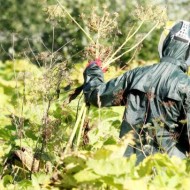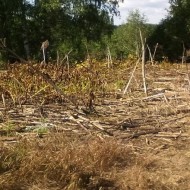What is the danger of Sosnovsky's hogweed: how to get rid of a poisonous plant on the site
Content
Types of hogweed and how to distinguish them
There are several species of hogweed, not all of which are equally dangerous to human health.
Safe varieties
A harmless variety of this plant is Siberian hogweed. Its main differences from Sosnovsky's cow parsnip are that it does not pose a danger to humans, does not cause burns and poisoning. It has smaller flowers with a yellowish tint. Despite its name, this species is widespread throughout Europe, and not only in Siberia.
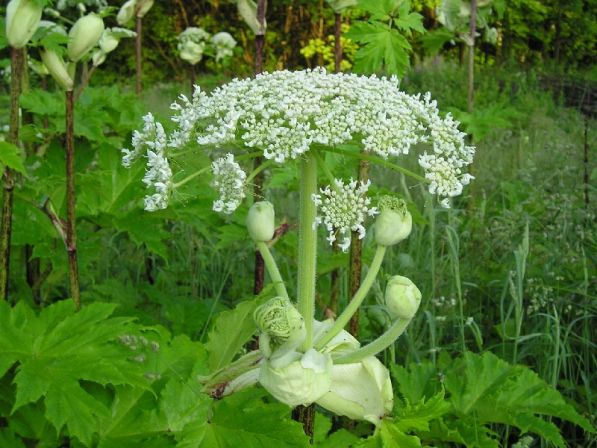
Despite the dangerous "congeners", the Siberian variety has useful properties. From the description of the culture, it follows that it is used not only in cooking, but also in folk medicine.
In addition to this variety, another is known - dissected hogweed. He also does not pose such a danger as the "hero" of our today's article.
Poisonous hogweed Sosnovsky
Sosnovsky's hogweed grows in Russia, Ukraine, Belarus and some European countries. Very often it grows to a huge size - a stem of several meters, decorated with snow-white bunches of flowers. On the Internet, you can find photographs of people in the background of these huge plants, accompanied by enthusiastic comments.
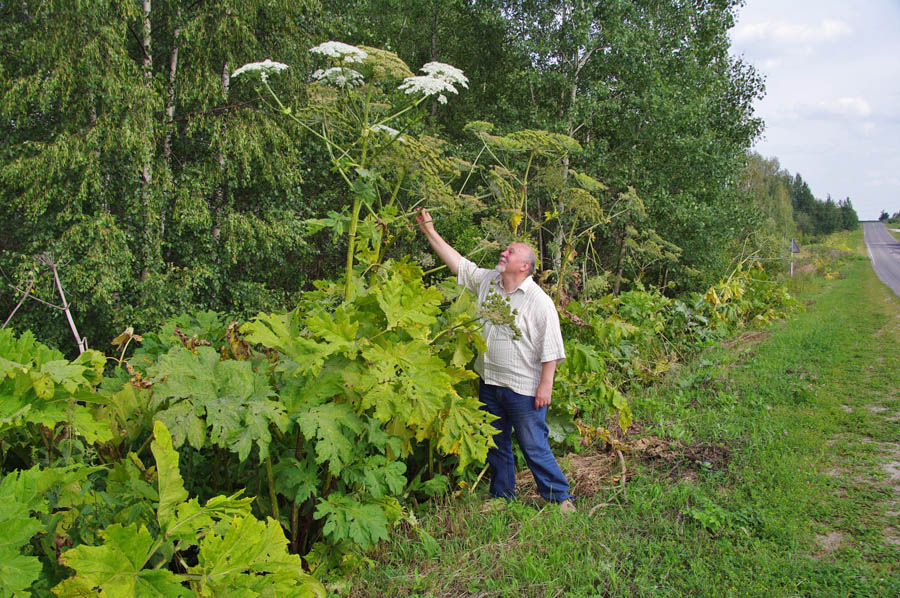
The plant itself came to our territories from the Caucasus, where Soviet scientists once discovered it. Its appearance (a huge stem, a dissected umbrella bunch with flowers) promised a solution to the problems of feeding livestock, but soon scientists were faced with the danger posed by the plant. However, by the time the decision was made to abandon the use of this plant, it had already managed to "occupy" a huge territory.
At the moment, the situation has worsened even more, as this dangerous herb continues to grow.
Sosnovsky's hogweed is a dangerous poisonous plant that annually causes thousands of injuries and ruined garden and ornamental crops.
Video "How to defeat Sosnovsky's hogweed"
This video shows you how to deal with weeds in your area.
Biological features
Now let's take a closer look at what the danger of the Sosnovsky hogweed is.
Suppression of other plants
The plant has a negative effect on ornamental and vegetable crops, as it produces a huge amount of seeds that suppress other plants. For example, let's give the numbers: during the period of flowering and reproduction, one plant produces an average of 20 to 35 thousand seeds. These seeds scatter around and sow the soil.
Given the huge amount of seeds in the soil, other plants simply have nowhere to germinate, especially if they are more selective in terms of natural conditions than hogweed.For this reason, the poisonous plant occupies large areas, simply not giving other flowers and grasses a place to grow.
Phototoxic action
But with the impact of plants on humans, the situation is much more serious. Cow parsnip is very toxic, and even with short-term contact with it, dangerous burns appear on the human body.
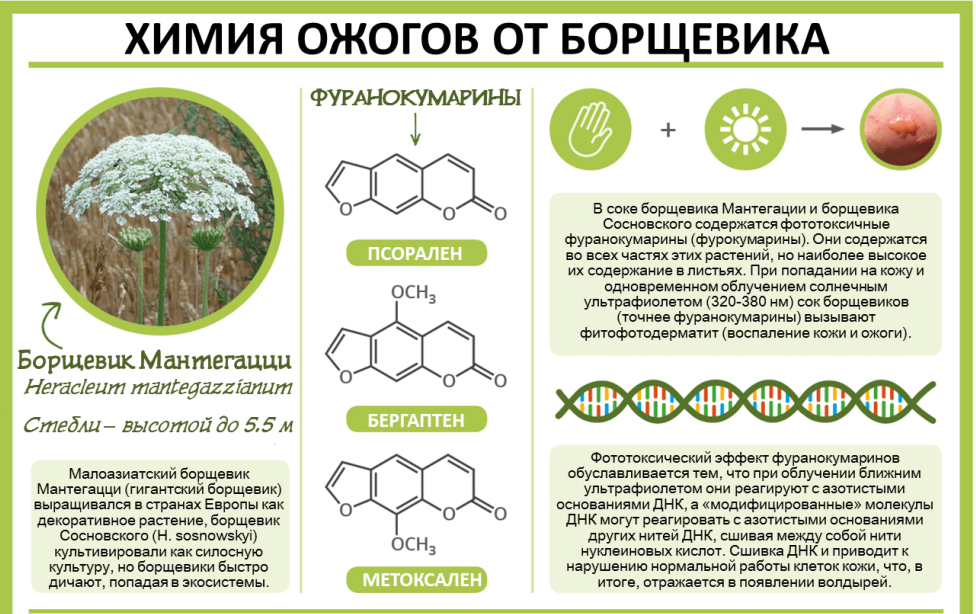
The fact is that the sap of the plant contains a dangerous element from the furanocoumarin group. It remains inactive until it is exposed to ultraviolet light. Thus, as soon as the sun comes out, those parts of the body on which the sap of the plant remains will be covered with dangerous first-degree burns.
The special danger of Sosnovsky's hogweed is that burns appear only under the influence of sunlight, immediately after contact with the plant, a person will not even feel discomfort.
In addition to burns, blisters form on the body, filled with a colorless liquid. They are very painful and take a long time to heal. They can appear even if the plant sap gets onto the body through clothing.
Single burns are not so terrible, because in the worst case, a person will need to go to the hospital, but all this can be cured. But if about 80% of the body area was affected, the outcome can be fatal.
A person may lose their eyesight if hogweed juice gets into his eyes. At risk are children and the elderly, whose bodies are much less resistant to the toxic sap of this plant.
Allergic effects
No less dangerous is hogweed pollen, which can become poisonous for allergy sufferers. If you inhale pollen, it will significantly harm the respiratory system, up to and including death. Due to toxic elements, the larynx begins to swell, and after some time suffocation occurs. Here it is best to immediately consult a doctor who will tell you what to do.
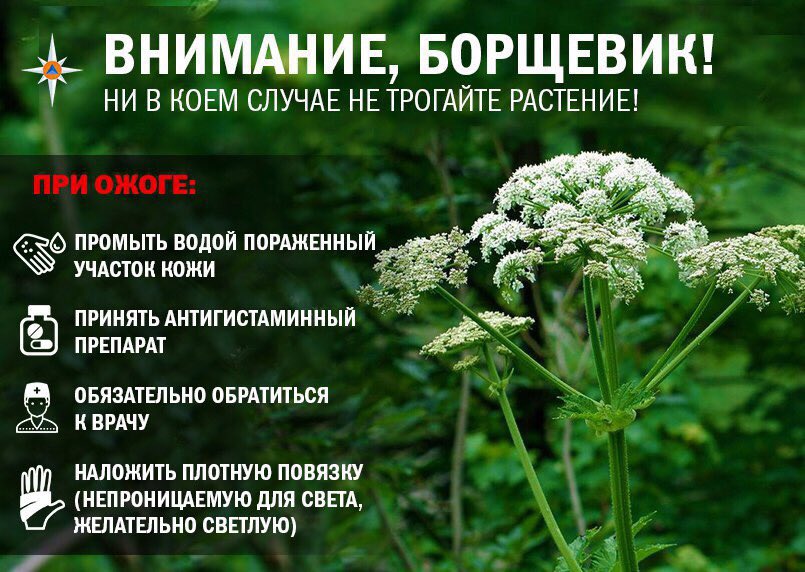
Weed control
After all these scary stories, you are probably wondering how to deal with this infection. Usually they offer mowing the grass, and this should be done several times over the summer, as the hogweed grows. However, we will look at all the alternative techniques you can try.
Mechanical methods
This category is considered the most efficient, but also the most energy-consuming.
Digging up the roots
With the arrival of spring, it is necessary to uproot and dig up all the roots of the plant that remain on your site. This method is considered one of the most effective, since in most cases it prevents the further development of a poisonous weed on the site.
Pruning umbrellas
Another effective remedy against this green poison. However, one nuance must be taken into account here: the procedure can be carried out only before the seeds ripen. Otherwise, you will simply nullify all efforts, because the seeds will fall and be sown in the ground.
Plowing and weeding
This method will be a salvation for those who have grown whole thickets of cow parsnip on the site. In the spring, you plow the land on which the grass grows, and then manually remove all the roots and stems. If shoots start growing again after a couple of weeks, repeat the procedure.
Black film
In the spring, after waiting for the first shoots of the weed to appear, cover it with a black film and fix it around the edges. This will limit the sun's access to the grass and also create a greenhouse effect. As a result, the weed will simply die. With the arrival of spring, you can remove the film and dig up the area.
Burning hogweed
This method cannot be used, although it seems to be effective. The fact is that for the procedure, the plants need to be doused with a combustible substance and set on fire. This can have colossal consequences if the operation is not carried out carefully.In hot weather, the risk of fire increases significantly.
Use of remediators
They also suggest planting the site with other fast-growing plants so as not to let the hogweed grow. As such plants, it is proposed to plant cereals or legumes. For example, a bonfire, goat's rue and galega are great.
- Complete removal
- Removing umbrellas
- Burning out
Chemical methods
Such methods are much less effective and harmful to the environment. Use them or not - decide for yourself.
Herbicides
They are used before flowering, spraying with solutions of Roundup or Tornado preparations, petioles, leaves, umbrellas and shoots of the plant. Since the plant is very tenacious, the treatment is carried out using a double concentration of the agent. Don't forget protective clothing. Also remember that the drug should not get on other plants.
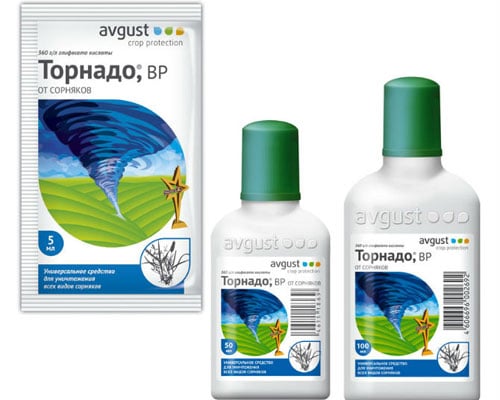
Graft
Vaccination is done if there are only a few plants on the site. Special preparations (for example, "Arboricide") or battery fluid are injected into the stem. To do this, they are drawn into a syringe and carefully injected into the plant.
Glyphosate herbicides
These drugs are used to control single plants in order to avoid negative effects on nearby plants. To do this, using a paint brush, cover at least 80% of the cow parsnip with a solution.
Now you know how many dangers Sosnovsky's hogweed is fraught with. Therefore, leaving for nature, carefully monitor which plants surround you in order to avoid unpleasant consequences. If the weed grows on your site, choose one of the proposed methods for eliminating it.

